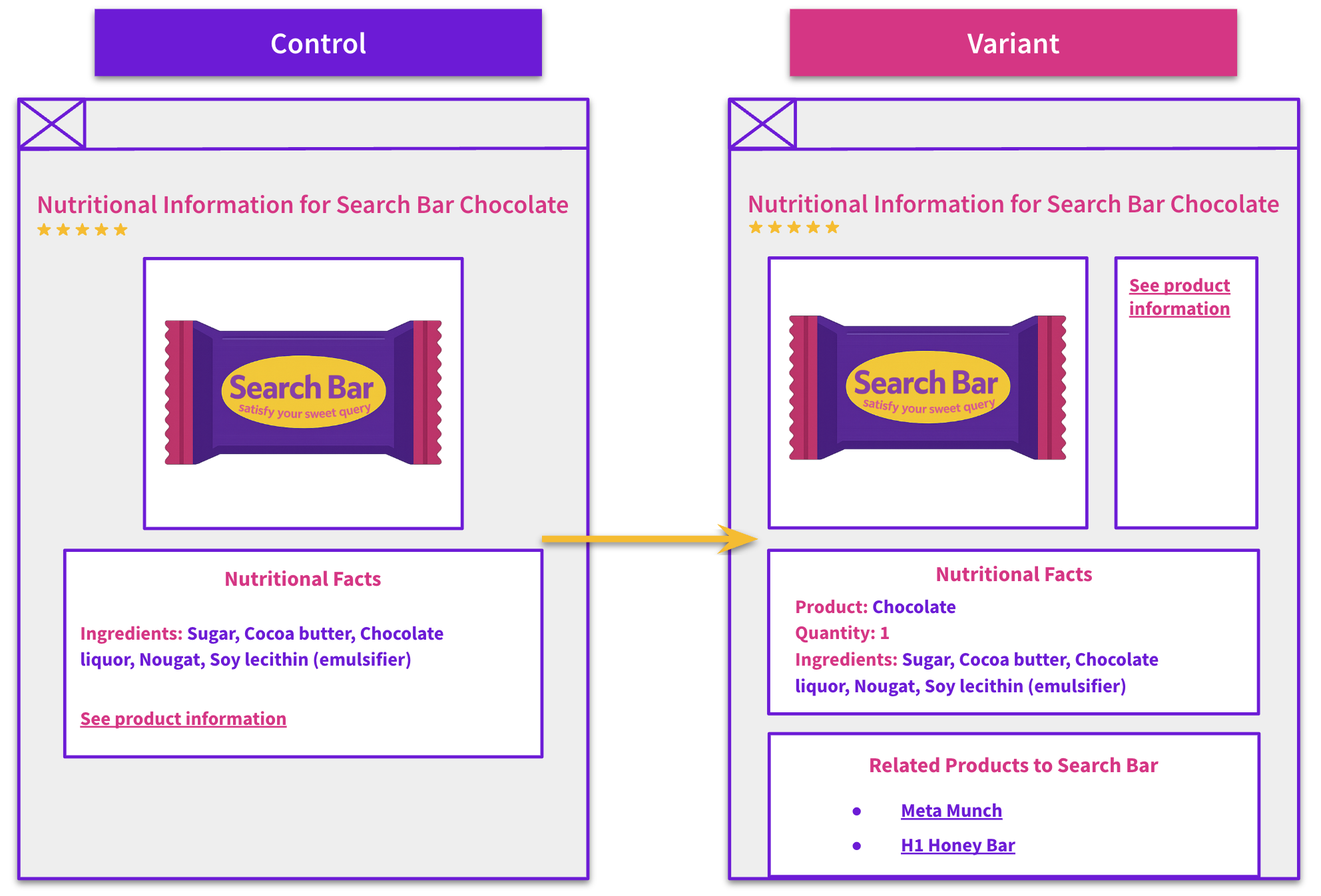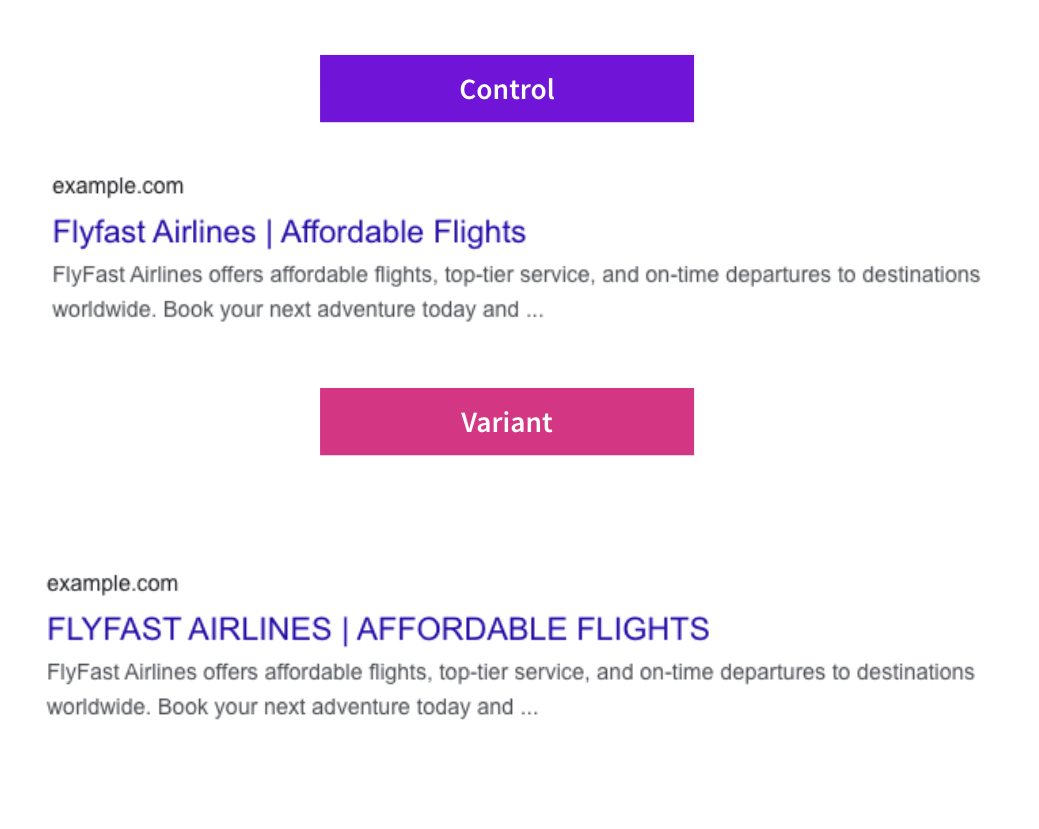Start here: how our SEO split tests work
If you aren't familiar with the fundamentals of how we run controlled SEO experiments that form the basis of all our case studies, then you might find it useful to start by reading the explanation at the end of this article before digesting the details of the case study below. If you'd like to get a new case study by email every two weeks, just enter your email address here.
For this week's #SPQuiz, we asked our followers on X/Twitter and LinkedIn what they thought the impact on click-through rates was when a healthcare industry customer tested moving clinic locations to the start of their title tags.
Poll Results

Nearly half of our audience is convinced that placing the location at the beginning of their title tags could boost click-through rates. Meanwhile, 40% anticipate no impact, and 10% predict a potential decline in clicks.
The Case Study
We know that title tags help drive organic traffic by attracting users in the SERP and boosting click-through rates. A SearchPilot customer in the healthcare industry wanted to test whether moving the location of their clinics to the start of the title tag would increase click-through rates by putting the most important information at the beginning.
The rationale behind this test is based on potential user behavior in search results. When searching for a local service, users might scan the SERP quickly, possibly looking for the most relevant and recognizable elements, such as location and service type. By shifting the location to the beginning of the title tag, we aimed to increase the visibility of this seemingly crucial information, which could make it more helpful immediately to searchers and encourage more clicks.
What was changed
The title tags were adjusted to add the location of clinic pages to the beginning.
Results
This test resulted in a predicted uplift of 8.5% at the 95% confidence interval, likely due to a 0.7% improvement to click-through rates relative to the control pages. The charts below summarize the click-through rate (CTR) and rankings changes for the variant group relative to the control during the test period.
It's important to note that click-through rates and rankings can fluctuate even without any changes to a page, as SEO doesn’t happen in a vacuum; after all, the SERP is a competitive landscape. This is why comparing CTR and ranking shifts against the control page is crucial for drawing meaningful conclusions.
From the click-through rate chart, we see that the variant group outperformed the control in click-through rate. However, both groups experienced ranking losses, with the variant group seeing a slightly greater drop. This suggests that while rankings and CTR are correlated, the positive impact of this test is more likely tied to CTR gains. More information on how to interpret our Google Search Console insights can be found here.
Although in some cases this data may be less reliable due to the sampling of Google Search Console data, in this test, click-through rate and rankings data was captured for 95% of the pages in the test.
Google rankings constantly fluctuate, and user engagement plays a significant role in driving traffic. This test suggests that even relatively small improvements in CTR can result in substantial organic traffic gains in certain contexts. Prioritizing high-intent information (like location) at the beginning of the title tag may make search results appear more relevant to users scanning through results. This increased relevance could contribute to higher click rates, though multiple factors might be at play.
Based on the positive results of this test, we recommended considering the implementation of location-first title tags for location-specific service pages. Different industries, competitive environments, and user search behaviors could influence outcomes, but our testing indicates this title tag structure might deliver meaningful traffic improvements in many contexts. Further testing could explore additional title tag variations to enhance results even further.
To receive more insights from our testing sign up to our case study mailing list, and please feel free to get in touch if you want to learn more about this test or about our split testing platform more generally.
How our SEO split tests work
The most important thing to know is that our case studies are based on controlled experiments with control and variant pages:
- By detecting changes in performance of the variant pages compared to the control, we know that the measured effect was not caused by seasonality, sitewide changes, Google algorithm updates, competitor changes, or any other external impact.
- The statistical analysis compares the actual outcome to a forecast, and comes with a confidence interval so we know how certain we are the effect is real.
- We measure the impact on organic traffic in order to capture changes to rankings and/or changes to clickthrough rate (more here).
Read more about how SEO A/B testing works or get a demo of the SearchPilot platform.


